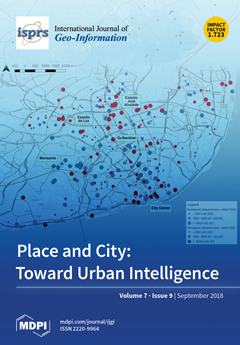Understanding farmland changes and their mechanisms is important for food security and sustainable development. This study assesses the farmland changes and their drivers within the Tumen River of China and the Tuman River within the Democratic People’s Republic of Korea (DPR Korea) from 1991 to 2016 (1991–2000, 2000–2010, and 2010–2016). Farmland surfaces in Tumen/Tuman River Basin (TRB) for each of the years were mapped from satellite imagery using an object-based image segmentation and a support vector machine (SVM) approach. A logistic regression was applied to discern the mechanisms underlying farmland changes. Results indicate that cultivated surfaces changes within the two regions were characterized by large differences during the three time periods. The decreases of cultivated surface of −15.55 km
2 (i.e., 0.55% of total cultivated surface area in 2000) and −23.61 km
2 (i.e., 0.83% of total cultivated surface area in 2016) occurred in China between 1991 and 2000 and between 2010 and 2016, respectively; while an increase of 30.98 km
2 (i.e., 1.09% of total cultivated surface area in 2010) was seen between 2000 and 2010. Cultivated surfaces increased within DPR Korea side over the three time periods; a marked increase, in particular, was seen between 1991 and 2000 by 443.93 km
2 (i.e., 23.43% of total cultivated surface area in 2000), while farmland increased by 140.87 km
2 (i.e., 6.92% of total cultivated surface area in 2010) and 180.86 km
2 (i.e., 1.78% of total cultivated surface area in 2016), respectively, between 2000 and 2010 and between 2010 and 2016. We also found that expansions and contractions in farmland within both regions of the TRB were mainly influenced by topographic, soil, climatic, and distance factors, which had different importance degrees. Among these significant forces, the temperatures in the two regions were paramount positive factors on farmland changes during 1991–2016 and slope in China and precipitation in DPR Korea were the paramount negative factors affecting farmland changes, respectively. Additionally, except for between 2000 and 2010 in DPR Korea TRB region, most of the factors significantly influencing the farmland changes revealed the same positive or negative effects in different periods, because of mountainous topography. This study allows enhancing understanding of the mechanisms underlying farmland changes in the TRB.
Full article





